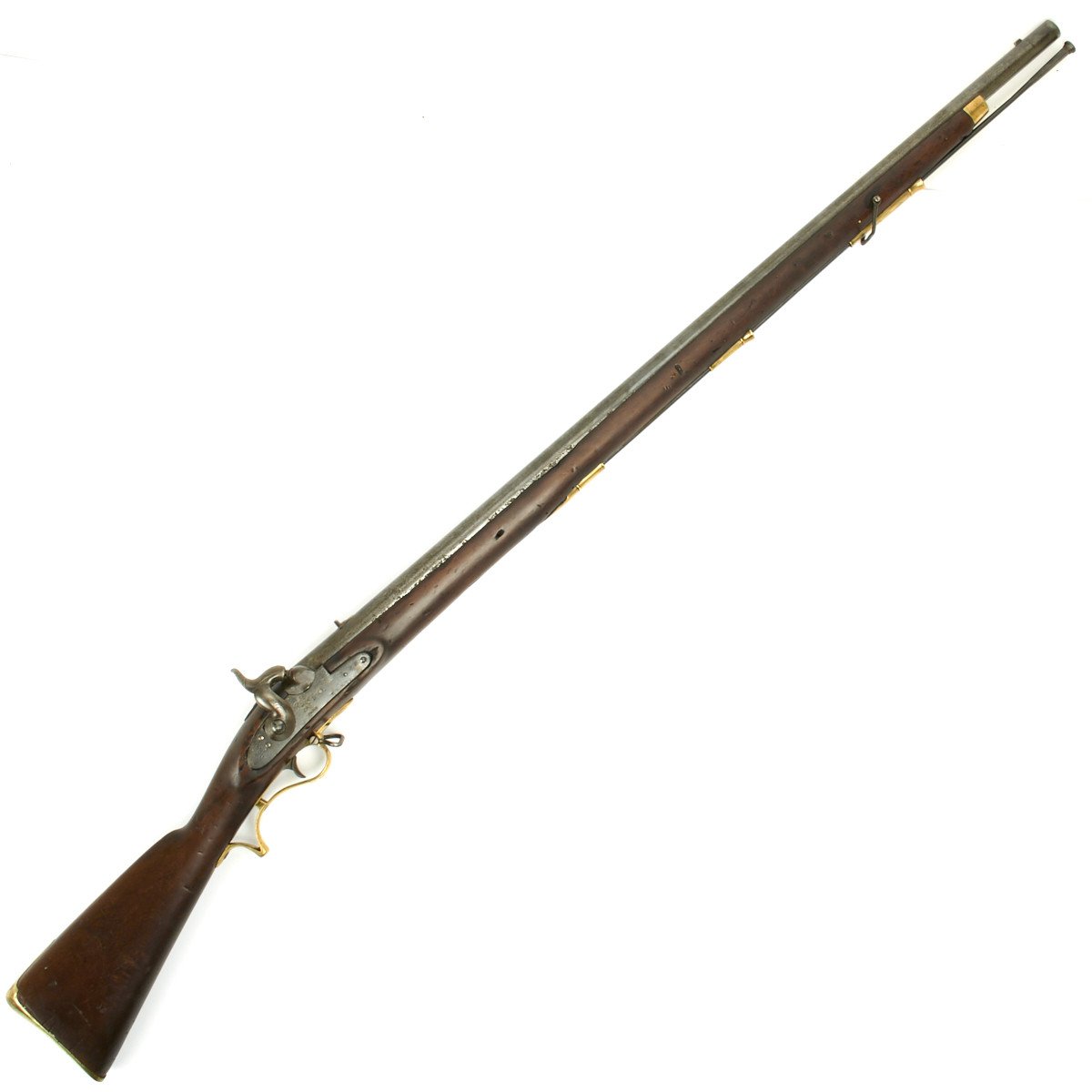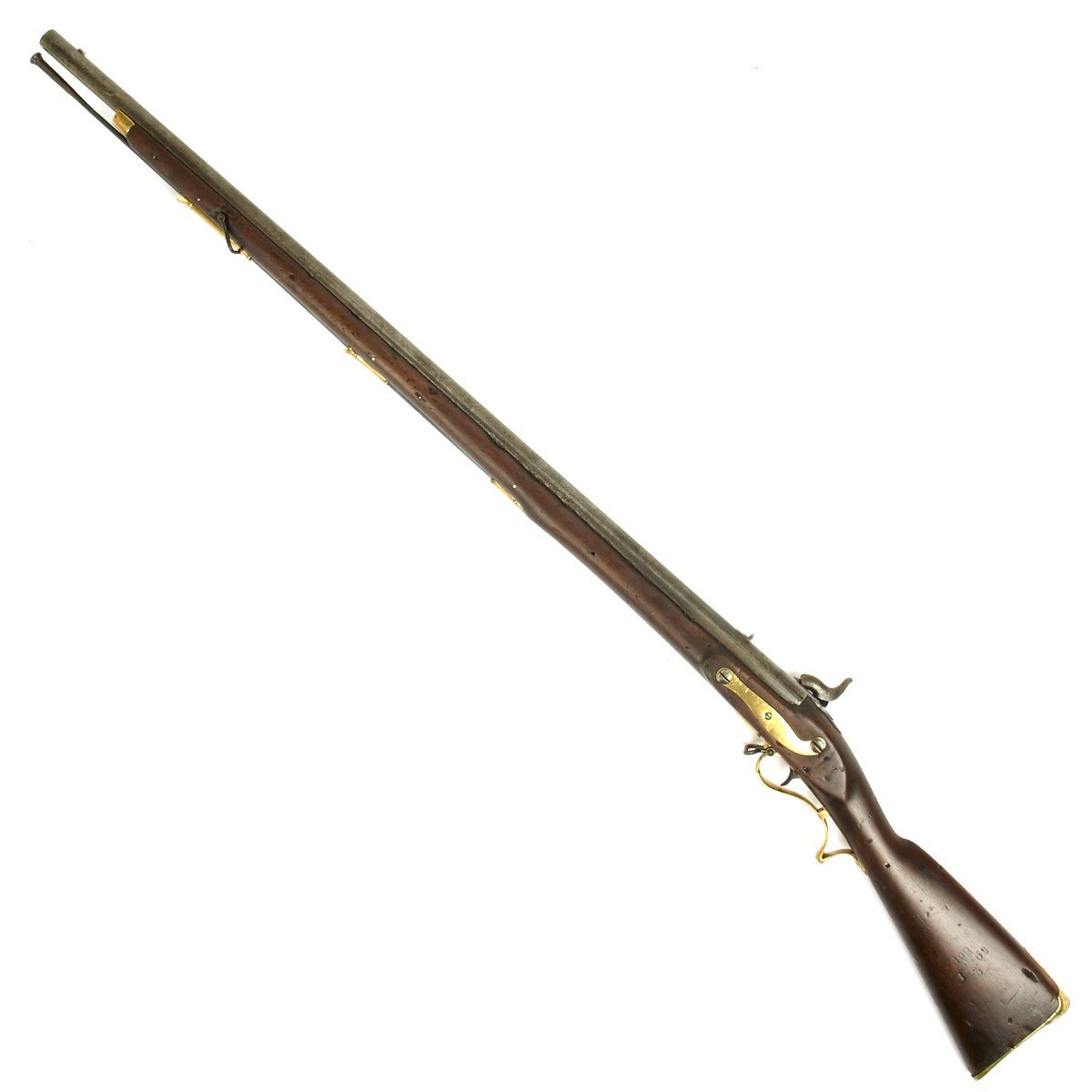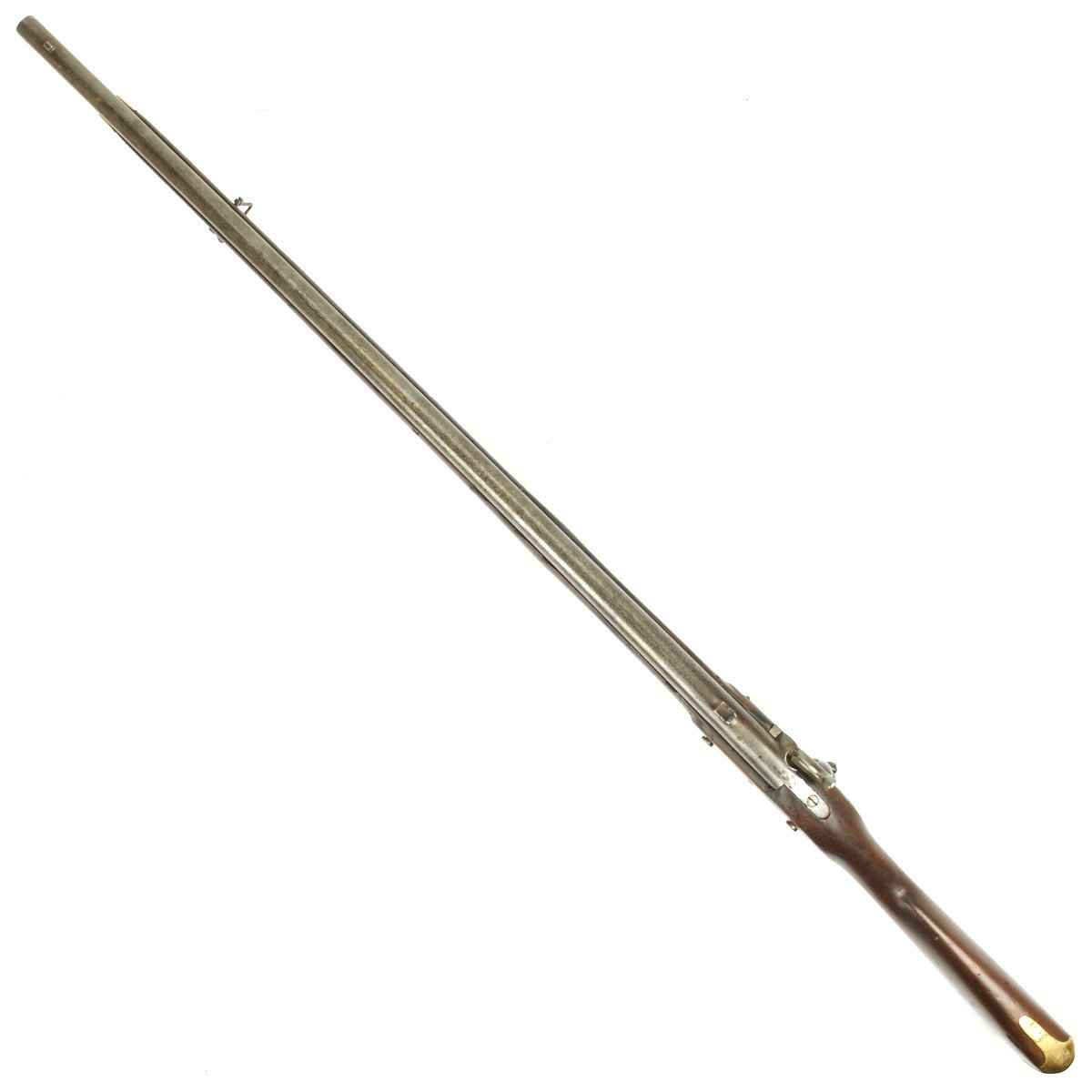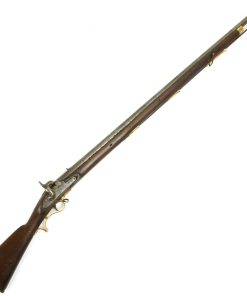Original British East India Company Model C Musket Original Items
$ 995,00 $ 248,75
Original Item: Rare. Official records tell us that the British East India Company procured or made no Flintlock Muskets after the late 1820s and it appears they were very swift to take advantage of the newest in firearms technology- the percussion ignition system. In 1840 the EIC began producing the world’s very first massed produced percussion musket that later became known as the EIC Model “C”.
A brief history of how this model came to being- The shortened 39″ barrel Brown Bess musket was first developed and adopted by the EIC in 1771. This was a full 25 years before the Board of Ordnance in London followed suit with a 39″ Brown Bess Musket dubbed the “India Pattern” in 1796. This is a testament that private enterprise has seemingly always got things done long before government bureaucrats. In 1839 the British Government officially adopted a converted to percussion Brown Bess musket (P-1796/39) but in the Great Fire of the Tower of London of 1841 over 400,000 of these converted Muskets were destroyed leaving the British Government very short handed. The result, once again, was to copy the current EIC Percussion Musket, the Model “F” and designate it the “Lovell’s Pattern of 1842”. By that time, the EIC had already developed and refined the .75 bore Percussion musket through six models- A to F.
IMA is proud to offer original British manufactured EIC Model “C” Muskets, again in .75 bore and with 39″ standard length barrel. Models A and B were EIC flintlock muskets converted to percussion. However, the Model C was the very first purpose built percussion issue, although, it appeared to be a conversion; it was in fact made from all new percussion oriented parts. It was fitted with what was referred to as an “Old Series side lock that looks like it was once a flintlock. It was also originally intended only to accept the Brown Bess socket bayonet secured on the foresight block. In general the vast majority of these “Old Series” muskets were later adapted with either Hanoverian or the Model F bayonet catches. The differences between the various EIC Models are generally minor; as stated Model A and B were Brown Bess flintlock conversions, Model C and D were purpose built percussion muskets but had the “Old Series side locks with differing trigger guard styles, while the Model E and F both had the “new series side locks and had either the Hanoverian Catch on the Model E or the EIC bayonet catch on the Model F.
Please See David Harding’s stellar work Smallarms of the East India Company 1600-1856, published in four volumes by Foresight Books in 1997. Specifically, please see Volume 2, pages 97-124 for a mass of information concerning the vary EIC Model muskets.
These EIC Model “C” Muskets that we are now offering, originate from our purchase from the kingdom of Nepal, are the rarest of the Percussion Muskets that we found and were only produced over a 2 year period at a cost of just over $2.00 per gun. The Models E/F Muskets were produced right up to 1851 at a cost of $3.70 per gun and 6 times the production quantity of the Model C.
This will be a short-lived opportunity to add a virtually unavailable EIC Musket Model to your collection. Don’t let it pass you by.
Specifications-
Years of Manufacture: 1850s
Caliber: .75″
Ammunition Type: Cap and Ball
Barrel Length: 39 Inches
Overall Length: 55 Inches
Action type: Side Action Percussion Lock
Feed System: Muzzle Loading
NOTE: International orders of antique firearms MUST be shipped using UPS WW Services (courier). USPS Priority Mail international will not accept these. International customers should always consult their country’s antique gun laws prior to ordering.
| Hand Select | No, Yes |
|---|
Fast Shipping with Professional Packaging
Thanks to our longstanding association with UPS FedEx DHL, and other major international carriers, we are able to provide a range of shipping options. Our warehouse staff is expertly trained and will wrap your products according to our exact and precise specifications. Prior to shipping, your goods will be thoroughly examined and securely secured. We ship to thousands clients each day across multiple countries. This shows how we're dedicated to be the largest retailer on the internet. Warehouses and distribution centres can be located throughout Europe as well as the USA.
Note: Orders with more than one item will be assigned a processing date depending on the item.
Before shipping before shipping, we'll conduct a thorough inspection of the items you have ordered. Today, the majority of orders will be delivered within 48 hours. The delivery time will be between 3-7 days.
Returns
The stock is dynamic and we cannot completely manage it because multiple stakeholders are involved, including our factory and warehouse. So the actual stock may alter at any time. It's possible that you may not receive your order once the order has been made.
Our policy is valid for a period of 30 days. If you don't receive the product within 30 days, we are not able to issue a refund or an exchange.
You can only return an item if it is unused and in the same state as the day you received it. You must have the item in its original packaging.
Related products
Uncategorized
Uncategorized
Uncategorized
Uncategorized
Uncategorized
Uncategorized
Uncategorized
Uncategorized
Uncategorized
Uncategorized
Uncategorized
Uncategorized
Band of Brothers ORIGINAL GERMAN WWII Le. F.H. 18 10.5cm ARTILLERY PIECE Original Items
Uncategorized
Uncategorized
Uncategorized













































































